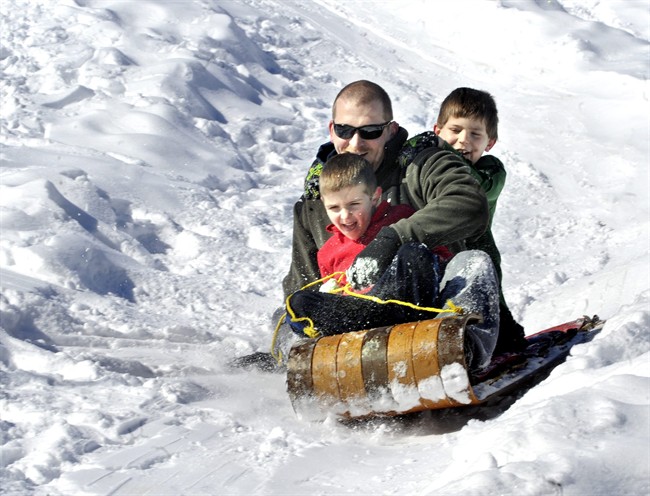PHILADELPHIA – A quick-moving storm brought several inches of snow as well as rare “thundersnow” to parts of the winter-weary East Coast, prompting speed restrictions on Pennsylvania highways on Tuesday, days after the Southeast and Northeast were paralyzed with heavy snow, ice and massive power outages.

By the morning rush hour, the National Weather Service had reported 4.5 inches of snow in Mercer County in western Pennsylvania and 3.5 inches in Berks County in eastern Pennsylvania. In Philadelphia, between 2 and 3 inches was reported.
The storm brought “thundersnow,” an area of heavy snow with embedded thunder, from near downtown Pittsburgh to Dubois. Forecasters said moderate to heavy snow would follow with snowfall rates over 1 inch per hour.
The storm led Pennsylvania Turnpike officials to reduce speed limits to 45 mph along the entire 360-mile highway system. State transportation officials followed suit on some interstates and other roads. Last week, a series of crashes on the turnpike outside Philadelphia injured 30 people and left cars stranded in a miles-long backup for hours.
Forecasters predicted many East Coast states would see 3 to 6 inches of snow on Tuesday after a storm moved in overnight from the Great Lakes and through the Mid-Atlantic. Some areas were getting rain, sleet or a snow-rain mixture.
“We’re looking at a relatively short duration event,” said the weather service’s John Cristantello.
- RCMP arrests alleged hitmen accused of killing B.C. Sikh leader
- Fall COVID-19 vaccine guidelines are out. Here’s what NACI recommends
- Some 2019 candidates ‘appeared willing’ to engage with foreign interference: Hogue inquiry
- Thousands of Canada’s rail workers have a strike mandate. What happens now?
Temperatures above freezing on Tuesday should move up to the 40s to mid-50s for the remainder of the week, he said, giving people a reprieve from shovelling and shivering.
Coastal areas in Maine and Massachusetts saw blizzard-like conditions with more than a foot of snow on Saturday, and thousands on Cape Cod were left without power. Maine was expected to get another 4 to 8 inches of snow on Tuesday. Boston was forecast get 1 to 3 inches but Worcester, located west of the capital, could get as much as 6 to 8 inches.
On Monday, several inches of snow fell across the Great Lakes, causing Chicago’s two airports to cancel more than 1,000 flights. In Michigan, crashes closed portions of Interstate 96 in Grand Rapids and the Muskegon area saw whiteout conditions.
Last week, about 1.2 million utility customers lost power as the storm marched from the South through the Northeast. Schools, businesses and government offices closed. The storm was blamed for at least 25 deaths stretching from Texas to Maine.



Comments